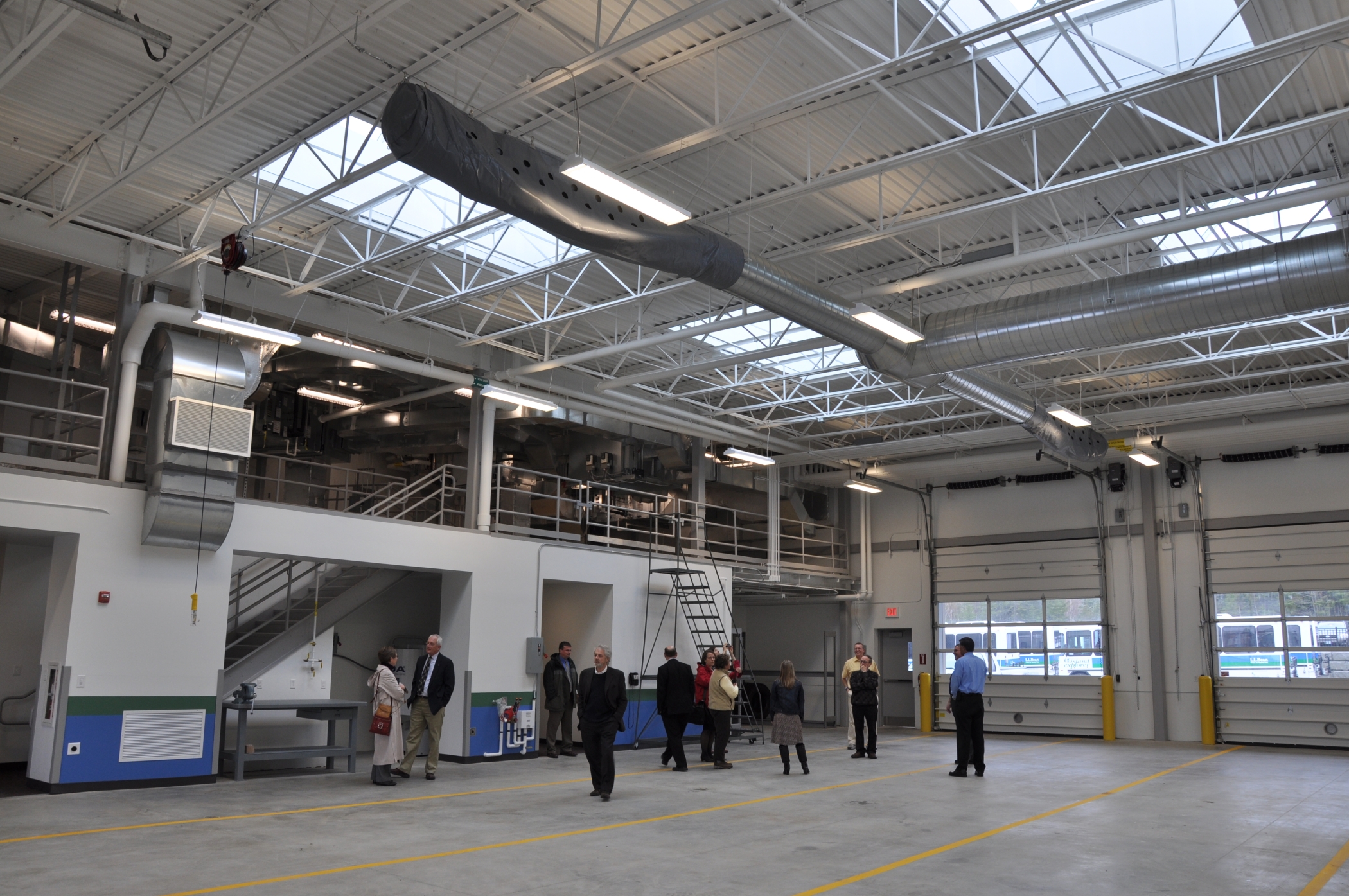Thornton Tomasetti announced that the Acadia Gateway Center administrative and maintenance facility has received LEED Gold Certification. Fore Solutions, the green building consulting company acquired by Thornton Tomasetti in 2012, provided LEED consulting services for the project located in Trenton, Maine at the gateway to Acadia National Park, one of the most visited national parks in the United States.
Fore Solutions was hired by the mechanical engineer on this project, Allied Engineering in Portland Maine, to provide LEED consulting. In this role, Fore Solutions reviewed the energy model, tracked compliance with LEED throughout design and construction and reviewed and submitted LEED documentation to the Green Building Certification Institute.
The Acadia Gateway Center administrative and maintenance facility is the first phase of a multi-phased project to implement a Transportation Demand Management Plan for Acadia National Park in order to reduce automobile traffic on Mount Desert Island. Phase I of the project consists of a 22,000-square-foot center located on Route 3 in Trenton, Maine that will function first as a bus maintenance and storage facility for the seasonal Island Explorer bus system and as a summertime park-and-ride parking lot for people who want to ride the propane-powered buses onto Mount Desert Island.
The second phase will include a visitor center and intermodal facility for the Island Explorer bus service.
Key points:
- This $14.7-million facility was funded through a combination of federal and state sources, including $11.6 million from the Federal Transit Administration.
- The Acadia Gateway Center is anticipated to reduce more than 10 million vehicle miles per year with the Island Explorer buses. Local bus routes will stop at the park and ride on-site to connect building visitors and staff to the surrounding area. Preferred parking for fuel-efficient vehicles is being provided for employees and visitors.
- Water used to wash buses is collected, filtered and reused – reducing water demand by 88%. No irrigation will be used on-site and temporary irrigation will only be provided for one year.
- The project demonstrates a 38.3% improvement in the building performance rating compared to the baseline building performance in ASHRAE-90.1-2004. Energy efficiency measures include an improved thermal envelope, high-efficiency glazing, reduced interior lighting power density and high-efficiency HVAC systems.
- Solar collectors are being used on the project to pre-heat domestic water for the domestic hot water system. Roof materials with a high SRI (Solar Reflectance Index) value have been installed on the roof.
- Materials with recycled content and local materials were used in the project wherever possible, and 70% of construction waste was diverted from landfills.
- Low-emitting adhesives, sealants, paints, carpet and composite wood materials are being used in the project.
- Accessible temperature and lighting controls have been installed for building occupants. +
Related Stories
| Dec 27, 2011
Suffolk Construction celebrates raising of Boston Tea Party Ships & Museum cupola
Topping off ceremony held on 238th Anniversary of Boston Tea Party.
| Dec 27, 2011
State of the data center 2011
Advances in technology, an increased reliance on the Internet and social media as well as an increased focus on energy management initiatives have had a significant impact on the data center world.
| Dec 27, 2011
USGBC’s Center for Green Schools releases Best of Green Schools 2011
Recipient schools and regions from across the nation - from K-12 to higher education - were recognized for a variety of sustainable, cost-cutting measures, including energy conservation, record numbers of LEED certified buildings and collaborative platforms and policies to green U.S. school infrastructure.
| Dec 21, 2011
DOE report details finance options for PV systems in schools
The report examines the two primary types of ownership models used to obtain PV installations for school administrators to use in selecting the best option for deploying solar technologies in their districts.
| Dec 21, 2011
AIA Chicago & AIA Chicago Foundation 2011 Dubin Family Young Architect Award announced
The Dubin Family Young Architect Award is bestowed annually and recognizes excellence in ability and exceptional contributions by a Chicago architect between the ages of 25 and 39.
| Dec 21, 2011
Few silver linings for construction in 2012
On the brighter side, nearly half of respondents (49.7%) said their firms were in at least “good” financial health, and four-fifths (80.2%) said their companies would at least hold steady in revenue in 2012.
| Dec 21, 2011
Hoboken Terminal restoration complete
Restoration of ferry slips, expanded service to benefit commuters.
| Dec 21, 2011
BBI key to Philly high-rise renovation
The 200,000 sf building was recently outfitted with a new HVAC system and a state-of-the-art window retrofitting system.
| Dec 20, 2011
Gluckman Mayner Architects releases design for Syracuse law building
The design reflects an organizational clarity and professional sophistication that anticipates the user experience of students, faculty, and visitors alike.
| Dec 20, 2011
Research identifies most expensive U.S. commercial real estate markets
New York City, Washington, D.C. and San Mateo, Calif., rank highest in rents.

















